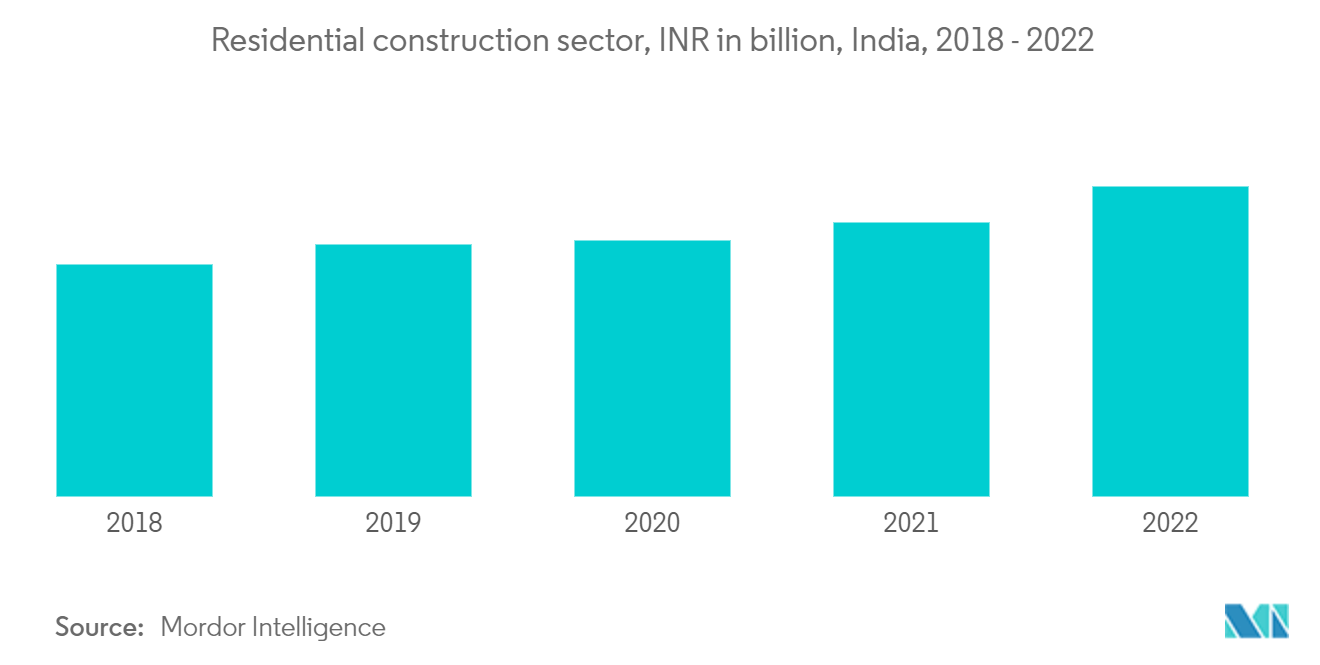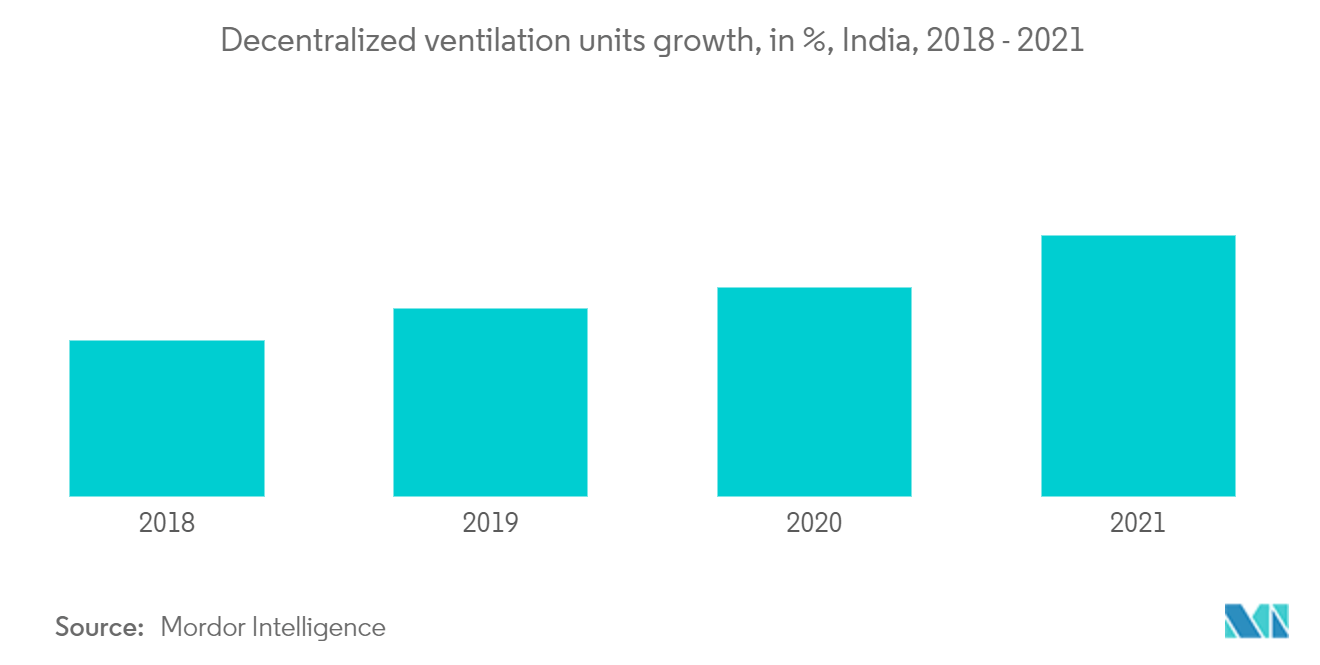Market Trends of India Home Ventilation System Industry
This section covers the major market trends shaping the India Home Ventilation System Market according to our research experts:
Rising Residential Construction Sector in India Driving the Market.
Residential construction in India growing around 15% CAGR and about to cross INR 40,000 billion in 2022, India witnessing an improvement in the real estate regulations, growth in the urbanization rate, and rise in government-initiated residential projects.India is among the top 10 price appreciating housing markets internationally. Organised retail real estate stock is expected to increase by 28% to 82 million sq. ft. by 2023.
Home sales volume across seven major cities in India surged 113% YoY to reach 62,800 units in the third quarter 2021, from 29,520 units in the same period in 2020. The current shortage of housing in urban areas is estimated to be 10 million units. An additional 25 million units of affordable housing are required by 2030 to meet the growth in the country's urban population.
In November 2021, the Indian Government approved the construction of 3.61 lakh houses under the Pradhan Mantri Awas Yojana (Urban). Moreover, the approval of the new housing units takes the total number of sanctioned houses under the scheme to 1.14 crore. For the affordable housing scheme, the Indian Government has approved a total investment of 7.52 lakh crore. Apart from Ventilation systems, the demand for heat pumps and AC is rising, especially in newly constructed housing units.

Increased Demand for Decentralized Ventilation System to Propel Market Growth
Decentralized ventilation system couples small packaged outdoor-air fan coil units, recirculated-air fan coil units, and a chilled ceiling, could reduce total daily electricity consumption for air-conditioning use by at least 15% in a commercial office space. Decentralization systems outperform in residential and commercial applications where natural ventilation is insufficient. It reduces space conditioning requirements by allowing compartmentalization of buildings into zones, which reduces air leakage through the building envelope. This, in turn, increases comfort, resulting in market growth.


